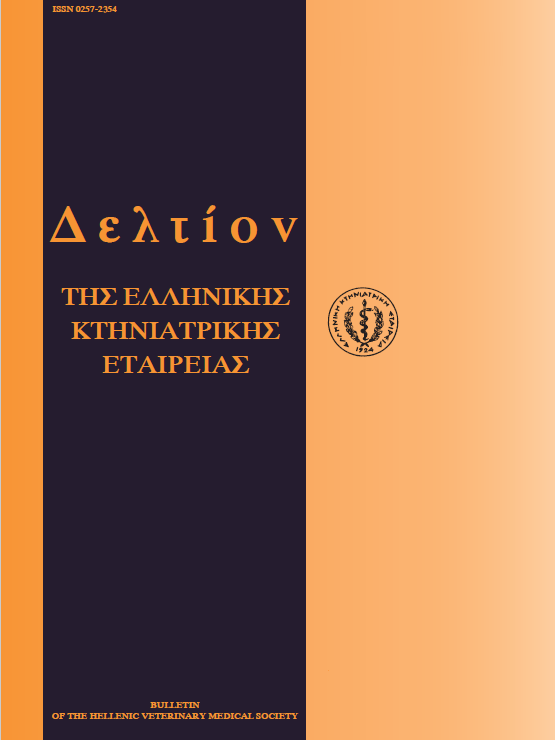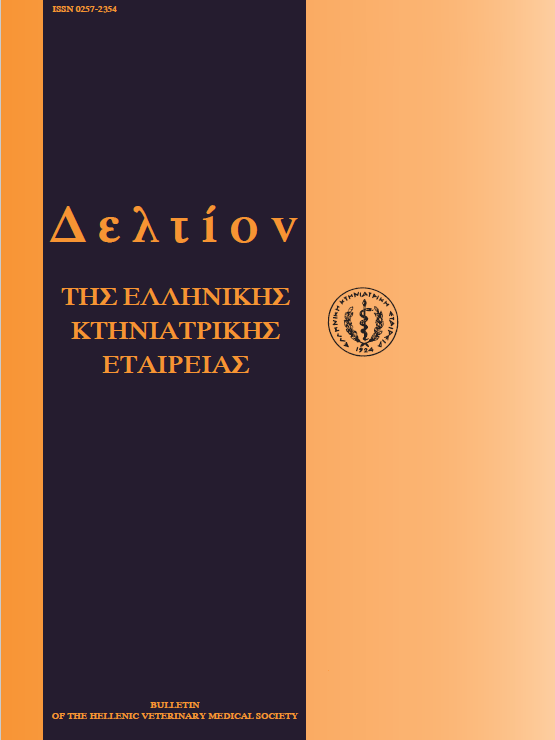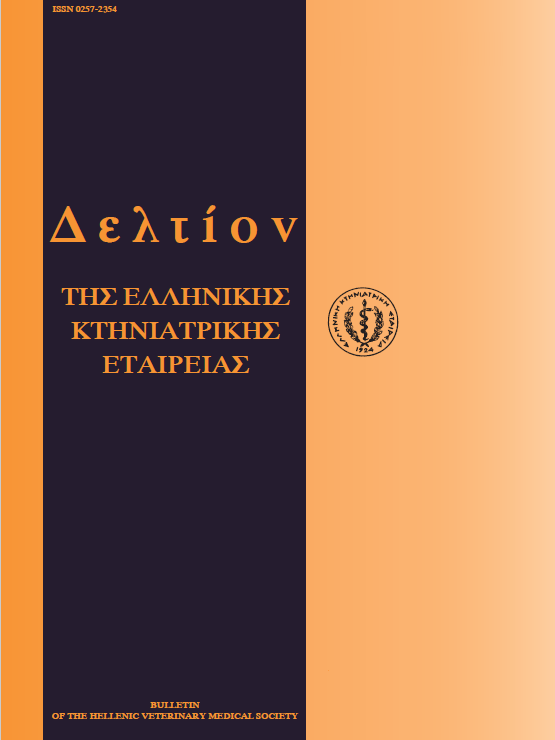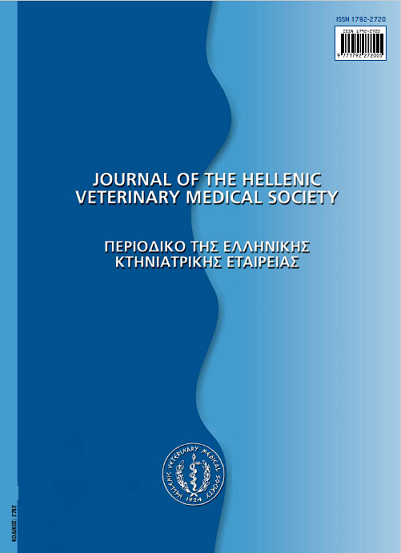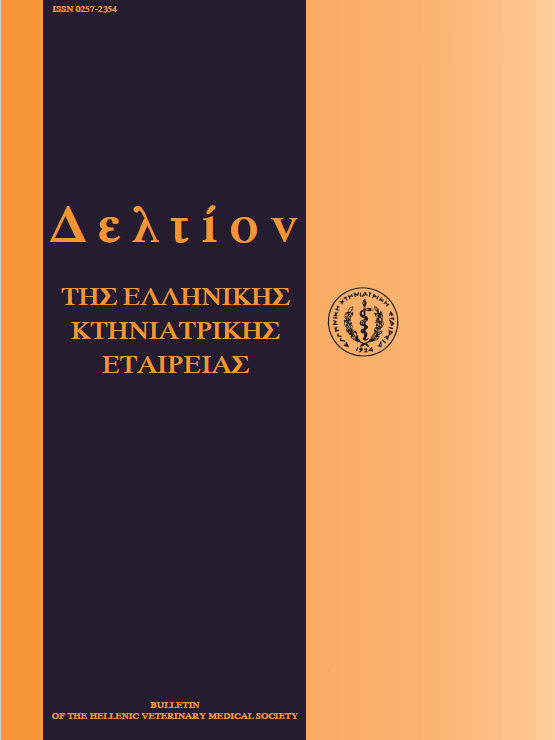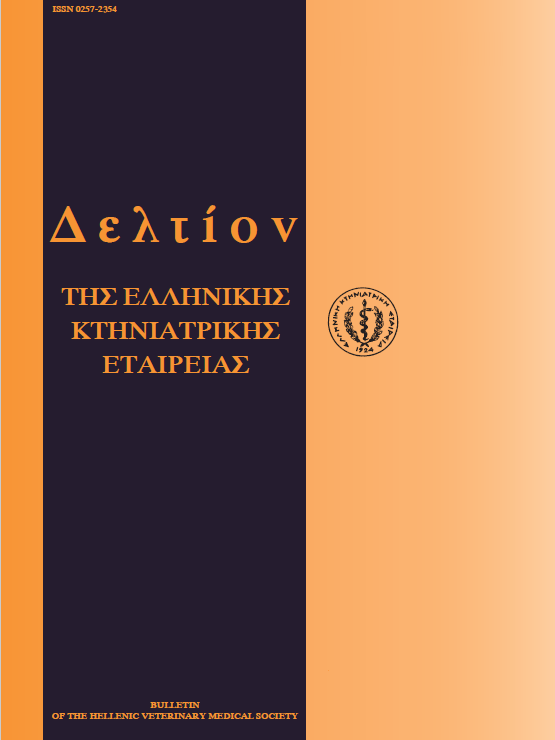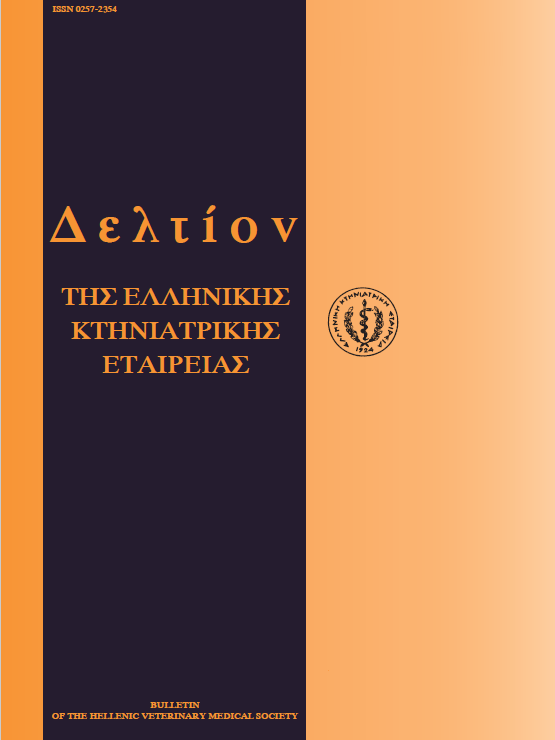Gastrointestinal nematodes of equine in the region of Thessaloniki
Abstract
During a period of approximately two months (January-February 1995), 91 out of 119 riding horses of the seven riding clubs of Thessaloniki their feces were examined. The purpose of this survey was to find out and identify parasites after examining their reproductive elements. In the feces of the horses of two riding clubs had not been found any reproductive elements, while in the remaining five were found strongylid eggs in population whieh ranged from 2-5 to 85-94 / g of feces; per club ( rate infection 68; 1 %). After the examination of the 3rd stage larval, which obtained from fecal culture, were identified, from large strongylids (sub-family Strongylinae), the species Triontophorus sp (42%), Strongylus equinus (29%), Strongylus edentatus (21 %), Strongylus vulgaris (6%), and Trichostrongylus axei (2%) from the family of Trichostrongylidae. From the small strongylids (sub-family Cyathostominae) were identified the genera Cyathostomum (42%), Cylicostephanus (24%), Gyalocephalus (22%) and Poteriostomum (12%). The identified genera Triontophorus, Gyalocephalus and Poteriostomum as well as the species Trichostrongylus axei, are mentioned for the first time in horses in greek region.
Article Details
- Come citare
-
THEODORIDIS (Ι. ΘΕΟΔΩΡΙΔΗΣ) Y., FOUNTA (Α. ΦΟΥΝΤΑ) A., & GEORGOULAKIS (Ι. ΓΕΩΡΓΟΥΛΑΚΗΣ) I. (2018). Gastrointestinal nematodes of equine in the region of Thessaloniki. Journal of the Hellenic Veterinary Medical Society, 50(2), 127–129. https://doi.org/10.12681/jhvms.15705
- Fascicolo
- V. 50 N. 2 (1999)
- Sezione
- Research Articles

Questo lavoro è fornito con la licenza Creative Commons Attribuzione - Non commerciale 4.0 Internazionale.
Authors who publish with this journal agree to the following terms:
· Authors retain copyright and grant the journal right of first publication with the work simultaneously licensed under a Creative Commons Attribution Non-Commercial License that allows others to share the work with an acknowledgement of the work's authorship and initial publication in this journal.
· Authors are able to enter into separate, additional contractual arrangements for the non-exclusive distribution of the journal's published version of the work (e.g. post it to an institutional repository or publish it in a book), with an acknowledgement of its initial publication in this journal.
· Authors are permitted and encouraged to post their work online (preferably in institutional repositories or on their website) prior to and during the submission process, as it can lead to productive exchanges, as well as earlier and greater citation of published work.

